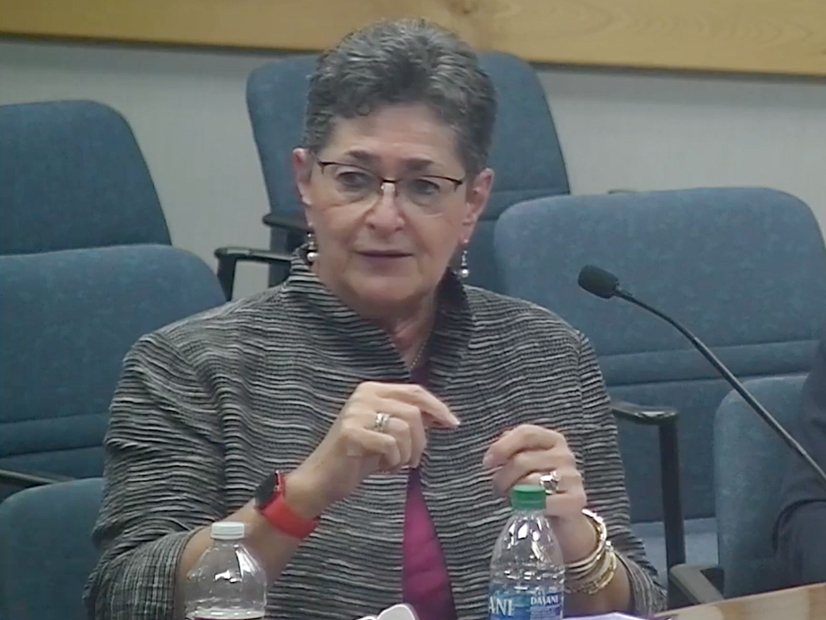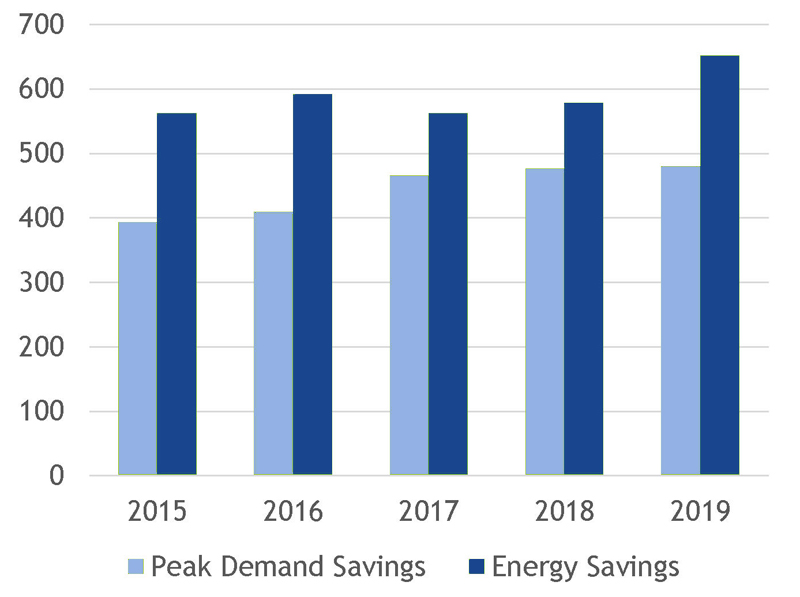
Texas regulators last week convened another workshop to discuss redesigning the ERCOT market, only to have one of the state’s leading energy experts dash their faces with cold water.
Alison Silverstein, former FERC and Texas Public Utility Commission Chair Pat Wood’s right hand, was among those lobbying the commissioners to consider the importance of energy efficiency and demand response in addressing the state’s increasing hunger for electricity and avoiding catastrophes like February’s winter storm.
“Are you feeling lucky?” Silverstein asked the commissioners. “You guys are undertaking the world’s fastest electric market redesign. These are incredibly complicated issues, and no one knows how to do this. You cannot afford to let load keep growing while you wait to see if all of your redesign works and all the pieces fall into place quickly, and load is growing wicked fast in Texas.”
Indeed, the state’s population is expected by some to nearly double to as many as 54.4 million by 2050. The state is already among the fastest growing in the nation and home to five of the nation’s 13 largest cities: Houston, San Antonio, Dallas, Austin and Fort Worth.
And while ERCOT in August had more than 170 GW of capacity under some form of study in its generator interconnection queue, only slightly more than 12 GW of that was the dispatchable generation favored by Gov. Greg Abbott in a July memo to the PUC. (See PUC Debates Answers to ERCOT’s Reliability Issues.)
“Energy efficiency and demand response give you defense in depth; they give you diversity and operational tools; they will help to buffer reliability and reduce the need for all that additional generation and all the folks that want to come spend capital in Texas to show up and get through the interconnection queue,” Silverstein said.
In an aside, she added, “And by the way, you can’t fix that in the next year or two fast enough.”
“Oh, but we can change it,” PUC Chair Peter Lake interjected.
“I know you can,” Silverstein responded, “but the question is, how fast between when you write the regulation and when the cash shows up and the infrastructure is on the ground? And you can’t change that.”
Texas’ energy-efficiency programs have some of the lowest energy-use reduction goals and per capita spending compared to all other states, according to a report released earlier this summer by Silverstein, Wood and four other former PUC commissioners. (See Former PUC Commissioners Weigh in on ERCOT Fixes.)
The report pointed out that the U.S. Department of Energy has indicated that the state could use cost-effective energy efficiency measures to reduce 2030 residential electricity use by 18.5% and total electricity sales by 17%. It advocated for raising utility efficiency program goals to increase both annual kilowatt-hour savings and peak reduction; additional efficiency retrofits for low-income and multifamily housing across Texas; and increasing DR for grid emergencies by requiring utilities to offer customers compensated options and procure resources that can remotely cut at least 10% of each entity’s summer and winter peak load.
“If we redesign the market correctly, do we still need to fund [utility] energy efficiency and demand response programs?” Silverstein said. “Yes, you do, and you cannot afford not to. Energy efficiency and demand response are the least costly resources available, relative to all that [dispatchable] generation and storage.”
She urged the PUC not to place 90% of its “cash bet” on the generation side of the equation. “Cover that bet with even a fraction of that sum in energy efficiency and demand response delivering massive benefits.”
The Sierra Club’s Cyrus Reed pointed to the state’s rule governing energy efficiency, which says “all customers … have a choice of an access to energy efficiency alternatives that allow each customer to reduce energy consumption, peak demand or energy costs.”

ERS is one of the only two DR programs ERCOT currently administers. The grid operator also allows load resources, which include six “controllable” resources totaling about 300 MW, to participate in its ancillary services and real-time energy markets.
Kenan Ögelman, ERCOT’s vice president of commercial operation, said he expects that latter population to grow because data centers involved in bitcoin mining and high-tech data management are rapidly moving into the state.
The grid operator procures ERS four times during the year and by selecting qualified loads and generators, including aggregations of loads and generators, to make themselves available during grid emergencies in 10- and 30-minute response times. Commissioner Lori Cobos asked Ögelman whether staff had any lessons learned from ERS’ deployment during the February storm.
Noting ERCOT data that indicate load overperformed by 30 to 35% but that generation was 50 to 55% below its obligation, Ögelman said, “The generation performance jumped out at me. That side did not perform as well as we expected.”
Commissioner Will McAdams filed a memo before the workshop calling for a “more conservative trigger” for deploying ERS resources and to consider increasing the program’s $50 million spending limit. The limit, found in a PUC rule, hasn’t been raised since 2008.
McAdams also suggested developing an emergency pricing program, as directed by the state legislature; improving ERCOT’s adequacy reports and forecasting; and re-evaluating the market’s scarcity pricing mechanism. He suggested potentially decoupling the systemwide offer cap, modifying the operating reserve demand curve and “setting the value of lost load in concert with examining the minimum contingency level.”
The commissioners agreed to take up the issues during its open meeting Thursday.
Critical Gas Infrastructure Rules
Separately, the PUC opened to public comment a rule change requiring critical natural gas facilities to provide customer information to their utility providers and directing the utilities to incorporate the information into their load-shed and restoration planning (52345).
Stakeholders have until Oct. 7 to comment on the proposed rule. If a hearing is requested, it will be held Oct. 12.
The rule is a companion piece to the Texas Railroad Commission’s (RRC) proposed amendment to the Public Utility Regulatory Act specifying the criteria and process by which natural gas providers are designated as critical customers or gas suppliers during an energy emergency. The RRC regulates Texas’ intrastate natural gas industry.
The two agencies have been urged to work closer together in the wake of the February storm, when confusion over critical infrastructure led to some gas facilities being shut down during controlled outages. Chair Lake suggested the two agencies conduct a joint workshop, saying both industries are complex, “and we don’t necessarily speak the same language.”
“This is our quick action to ensure electric utilities have all the information they need from critical natural gas facilities to inform them in future load-shed events,” PUC staffer David Smeltzer said.



